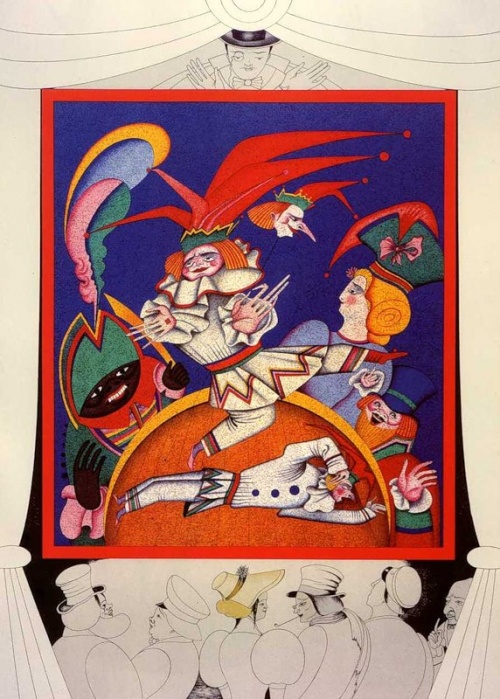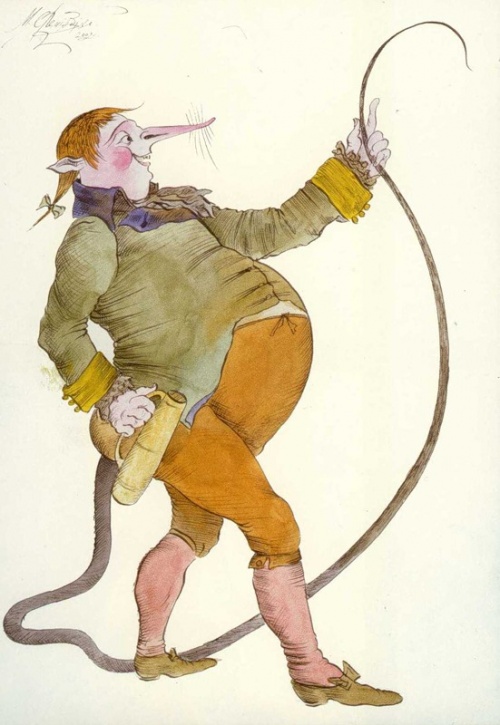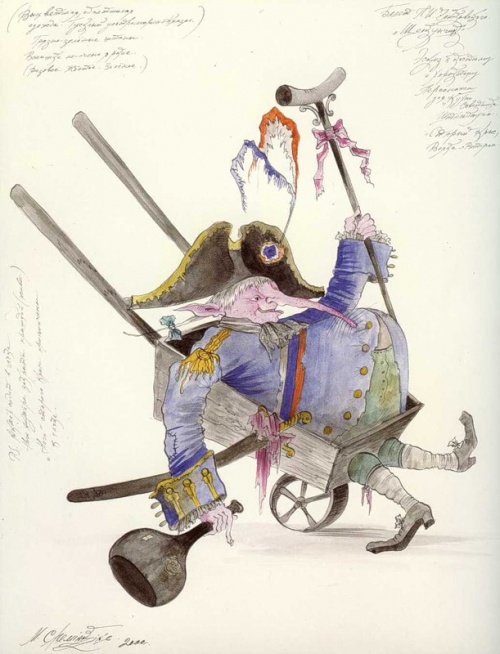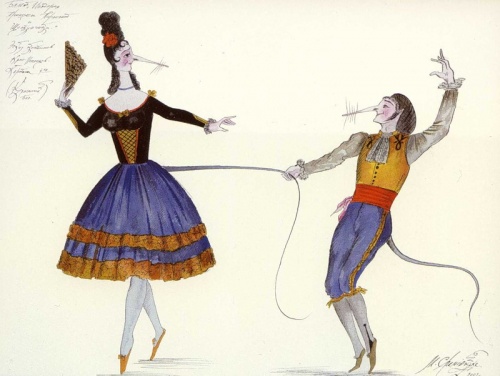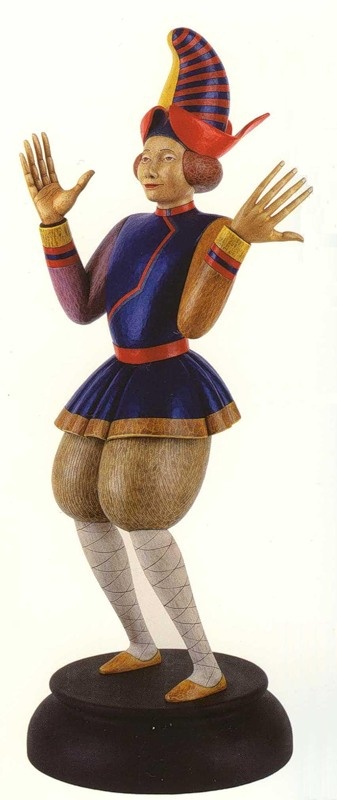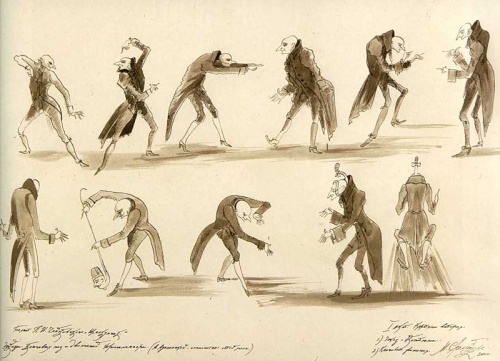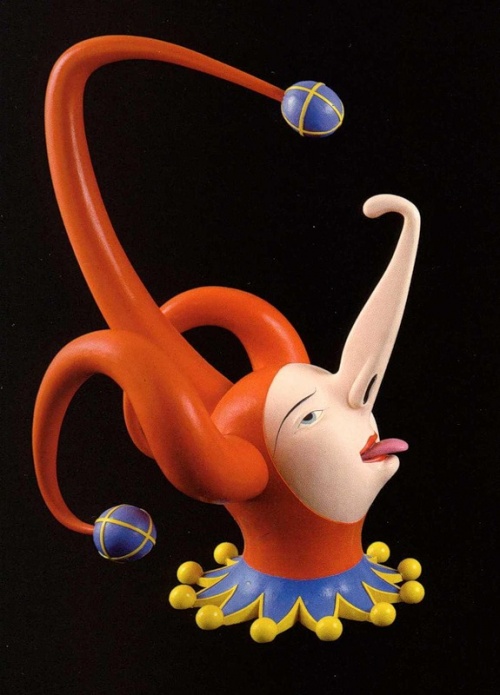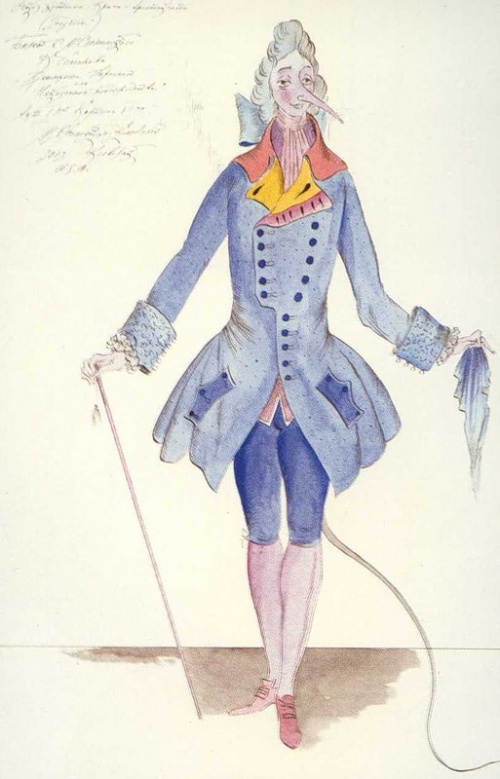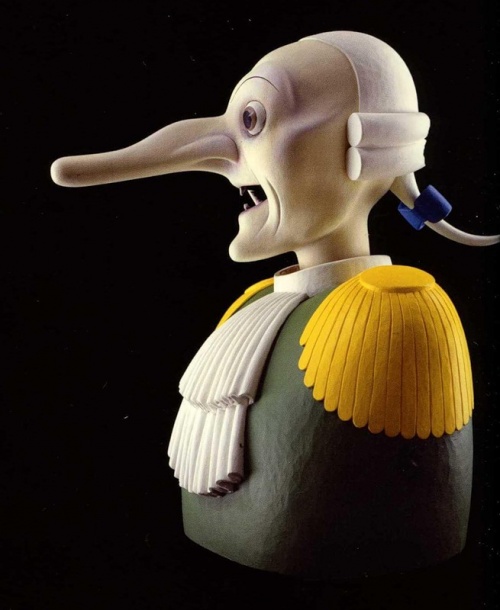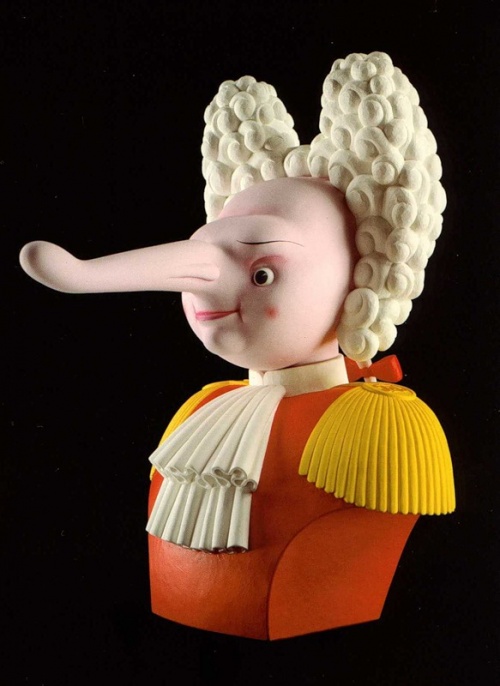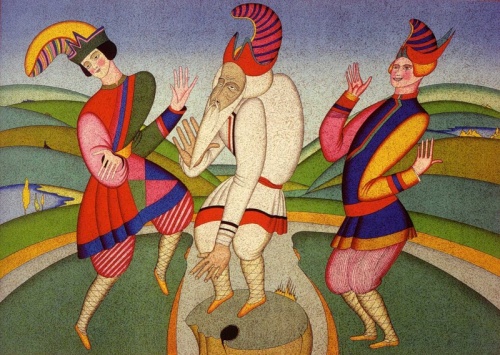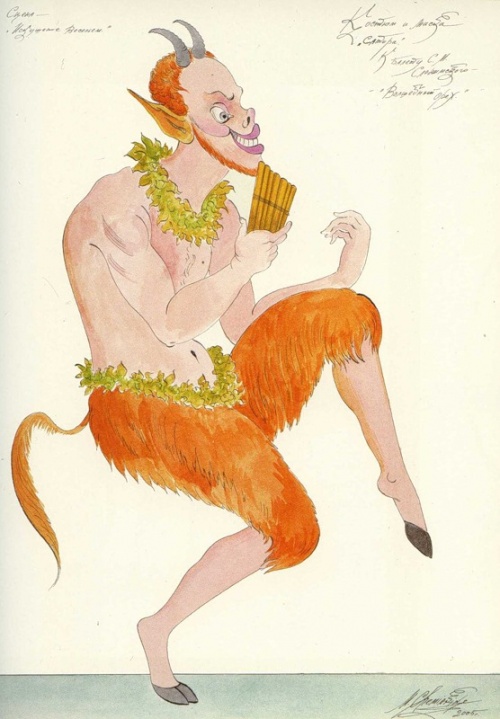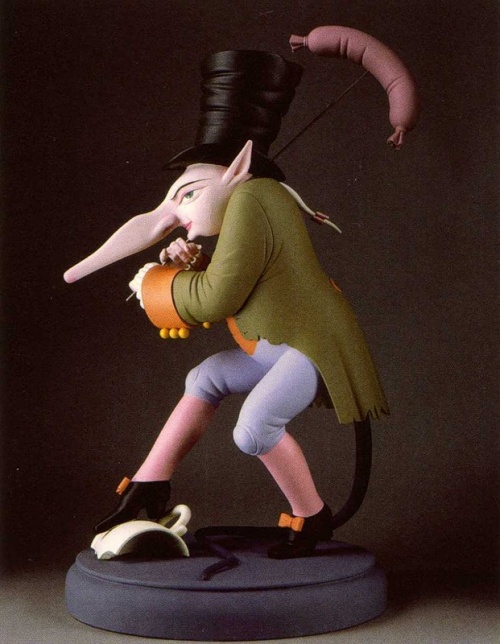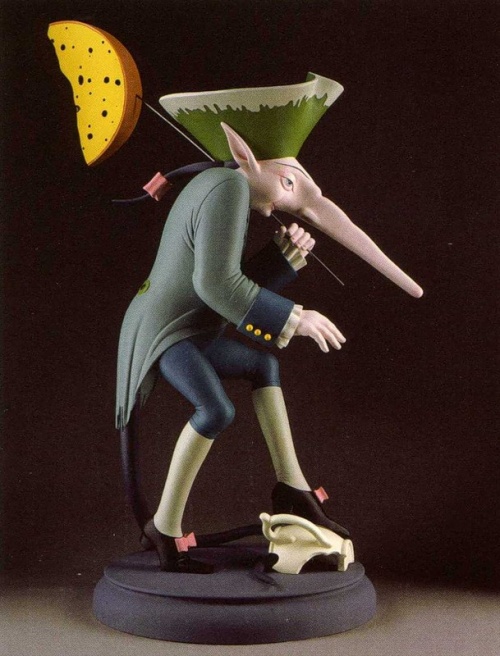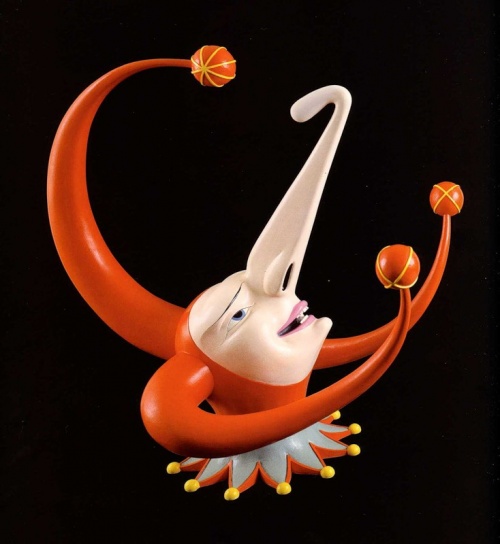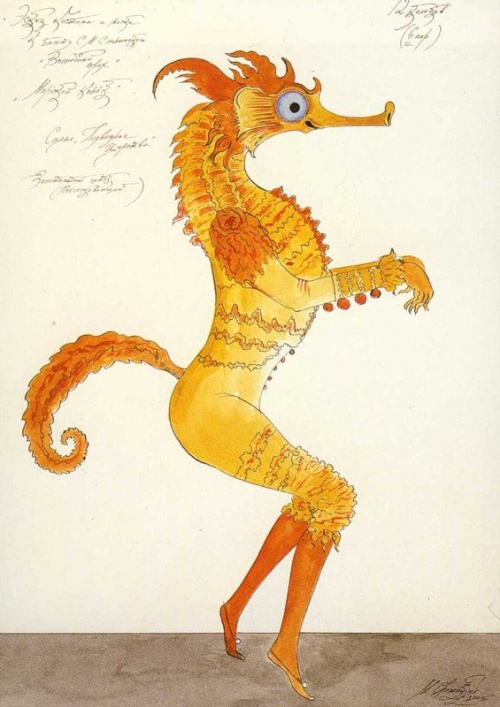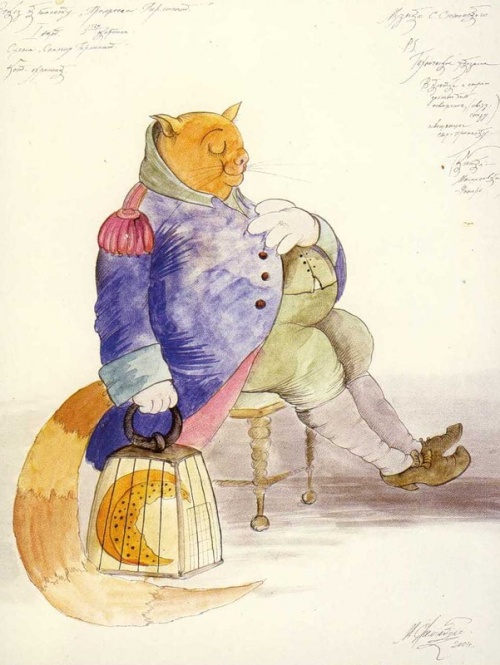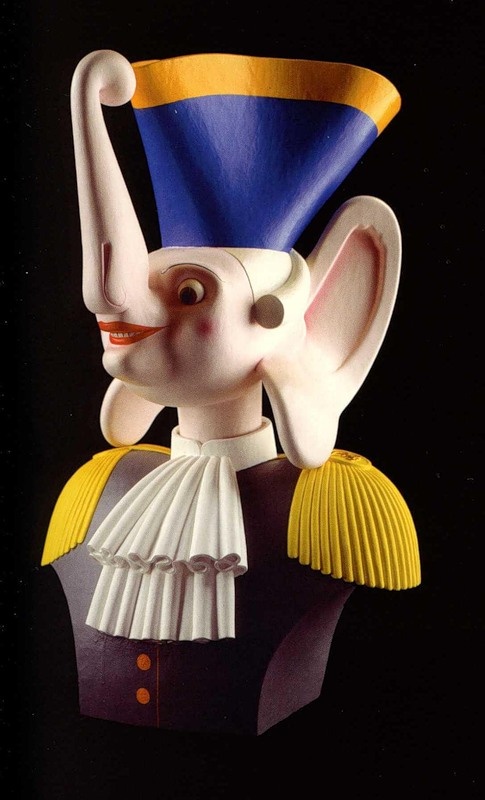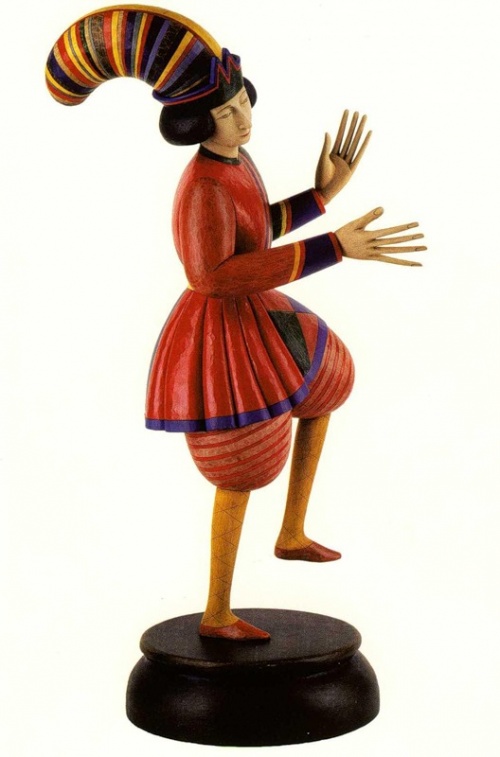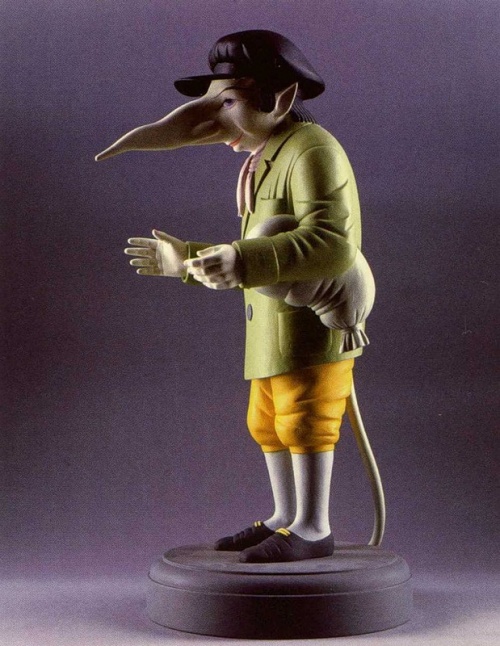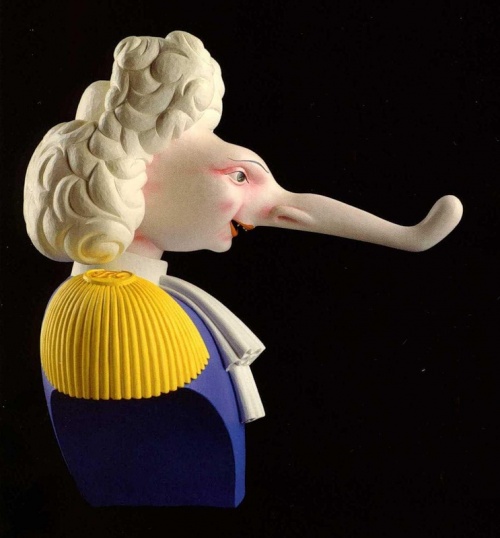Mikhail Shemyakin. Part 2. The art of theater (41 works)
Разрешение картинок от 337x800px до 743x800px
On the theme of I. Stravinsky’s ballet “Petrushka”. 1989. Color lithograph
In the 1960s, Shemyakin only once had the opportunity to work as a theater artist - during the production of D. Shostakovich's opera "The Nose" on the educational stage of the St. Petersburg Conservatory. But the matter was limited to the premiere. Only thirty years later did he return to the world of theater, when Valery Gergiev invited him to stage “The Nutcracker” on the stage of the Mariinsky Theater. Shemyakin created a fundamentally new concept for this ballet, which is sometimes, unfortunately, interpreted in the manner of a Christmas fairy tale.
The other extreme, typical of modern directors, is the desire to “modernize” the performance, turning it into a “laboratory” for pornographic experiments that have nothing in common with either Hoffmann or Tchaikovsky. On the contrary, for M. Shemyakin the main thing remains loyalty to the plans of both masters, for whom art was a way of ascent to the world of Beauty, shining through the images of “The Nutcracker”.
Just as V. Gergiev, with his interpretation of Tchaikovsky’s music, revealed and sharpened the drama inherent in it, so M. Shemyakin, for his part, contributed to an updated reading of the famous and rather boring ballet, showing the metaphysical depths hidden in it. Since the traditional libretto by Marius Petipa did not include the themes of the three chapters of Hoffmann’s fairy tale, which tell the story of the magic nut and the transformation of Drosselmeyer’s nephew into the Nutcracker doll, Shemyakin had the idea to create a performance that would allow the plot of this romantic work to be restored in its entirety. The new ballet to the music of S. Slonimsky was called “The Magic Nut”. It is perceived as an elegant carnival spectacle, but one cannot help but feel the philosophy of the artist behind everything, observing the intertwining of worlds that are often in irreconcilable contradiction with each other.
